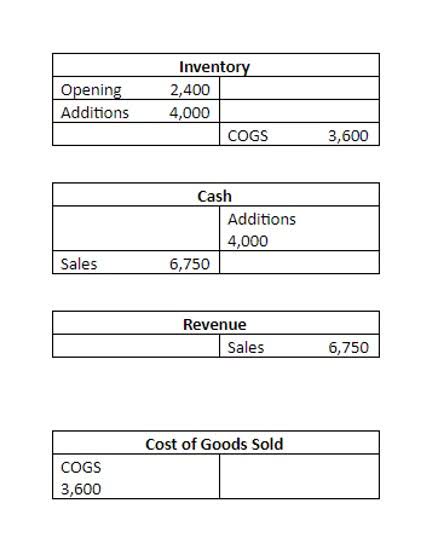
For example, if a company made $100 million in annual profits, but only paid out $10 million to shareholders, its retained earnings would be $90 million. Retained earnings are the profits that a company has earned and reinvested in itself instead of distributing it to shareholders. Treasury shares continue to count as law firm chart of accounts issued shares, but they are not considered to be outstanding and are thus not included in dividends or the calculation of earnings per share (EPS).
- Retained earnings are part of shareholder equity as is any capital invested in the company.
- Gaining insight into whether equity tends to increase or decrease aids in understanding the company’s capability of generating wealth for shareholders.
- It basically summarizes the ownership of a company and can be used to quickly determine the difference between assets and liabilities.
- Statement of shareholders’ equity reports the changes in the value of shareholders’ equity or ownership interest in a company from the beginning of an accounting period to the end of it.
- As it turns out, this document becomes pivotal for all parties involved for informed decision-making and strategic planning.
- They can omit the statement of changes in equity if the entity has no owner investments or withdrawals other than dividends, and elects to present a combined statement of comprehensive income and retained earnings.
Get in Touch With a Financial Advisor
- As you can see from the cross section of all the rows and columns, every equity account is listed along with their beginning balances, ending balances, and activity during the period.
- Fluctuations in shareholder’s equity imply changes in the shareholders’ wealth.
- In any case, the increase to owners’ equity as a result of additional paid-in capital during 2019 was $11.001 million.
- As you might expect, the big changes to retained earnings were net income and dividends.
- This document forms a core part of a company’s financial statements, alongside the balance sheet, income statement, and cash flow statement.
As for prospective investors, this statement fundamentally serves as an indicator of a company’s net value, helping decipher its attractiveness and viability for investment. It facilitates insights into how efficiently the corporation manages its resources, hence playing contribution margin a decisive role in investment decisions. Gradual growth in shareholders’ equity can showcase the company’s fiscal stability and resilience, making it a viable choice for investment. On the contrary, a declining equity trend may signal potential red flags, prompting an investor to reconsider their decision.
What is the approximate value of your cash savings and other investments?

The company uses it to manage the working capital position, procure assets, repay debt, etc. These are not yet distributed to the stockholders and retained by the company for investing in the business. The common stockholders have more rights in the company in terms of voting on the company’s decision, but when it comes to payment, they are the last ones on the priority list.
Would you prefer to work with a financial professional remotely or in-person?

When profits are realized and retained, the equity increases, and when losses are suffered, it dwindles. Regular monitoring of these adjustments not only helps gauge fiscal health but also in strategic future planning. If equity continually expands over time, it’s a positive sign of growth, implying good management and a healthy financial status. If it is positive, it indicates that the company’s assets are more than its liabilities. Negativity may arise due to buyback of shares; Writedowns, and Continuous losses. If the negativity continues for longer, the company may go insolvent due to poor financial health.
- Stockholders’ equity might include common stock, paid-in capital, retained earnings, and treasury stock.
- Business.com aims to help business owners make informed decisions to support and grow their companies.
- Small business owners must deal with numerous accounting reports to monitor their business’s finances and ensure its financial health.
- Investors contribute their share of paid-in capital as stockholders, which is the basic source of total stockholders’ equity.
- If equity continually expands over time, it’s a positive sign of growth, implying good management and a healthy financial status.
- This statement lists the changes to the stockholders’ equity section of the balance sheet during the current accounting period.
- Every accounting period, there are entries on the balance sheet that indicate an increase or decrease in this figure.
The cost of equity is another vital measure to evaluate when analyzing a shareholders equity statement. It represents the return investors require for investing their equity in the firm. If an organization’s return on equity is below its cost of equity, this indicates that it’s not rewarding its shareholders adequately for the risk they bear to invest their funds in the company. ROE illustrates how well a company generates earnings from the equity invested in it. A high or increasing ROE can suggest that the company uses equity finance effectively and creates good returns for its investors.
Example of shareholders’ equity
Retained earnings, as the name suggests, are the amount of net income that a company has kept (retained) over the years after paying off dividends. This component is quite indicative of the company’s financial health as it shows the extent to which it can finance its own operations and growth using the profits it has generated. An increase in retained earnings year over year can signal a company that is healthy and profitable, whereas a decrease may raise a red flag. Aside from stock (common, preferred, and treasury) components, the SE statement includes retained earnings, unrealized gains and losses, and contributed (additional paid-up) capital. Many investors view companies with negative shareholder equity as risky or unsafe investments. But shareholder equity alone is not a definitive indicator of a company’s financial health.

When—and How—to Create a Stockholders’ Equity Statement
If the losses exceed the available retained earnings, it might eat into other areas of equity – this situation can lead to negative shareholders equity. Common stock can be defined statement of stockholders equity as the amount that has been invested by the shareholders in exchange for shares of the company. It represents the initial capital that a company uses to start or expand its operations. The quantity of common stock is significant as it shows the level of faith that the investors have in the company’s future prospects. If the company’s common stock value is seen to be increasing over a period, it may indicate that the company is performing well and that shareholders have confidence in its direction. From a shareholder’s point of view, the Shareholders’ Equity Statement ensures transparency – a significant component that bolsters trust and confidence in the management.



